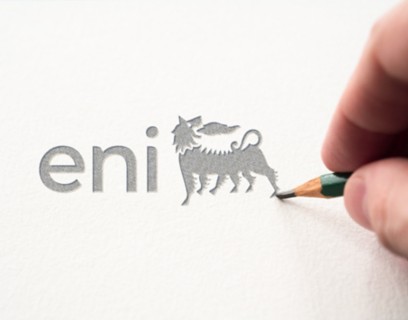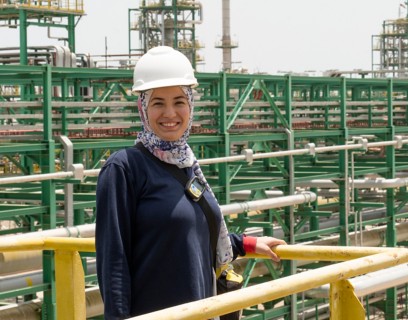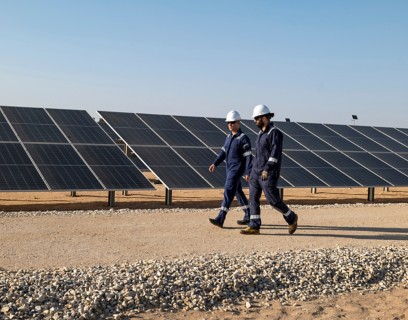- FINANCE, STRATEGY AND REPORTING
Highlights and outlook
- Hydrocarbon production at 1.734 million boe/d in the first half, up by 0.5% (down by 2.2% in the quarter); excluding the impact of the production shutdown at Val d’Agri, production rose by 2.4% (up by 1.5% in the quarter)
- Eni reaffirms guidance of stable production y-o-y, despite the Val d’Agri shutdown
- Achieved 5 out of the 6 main start-ups scheduled for 2016, among which was the Goliat oilfield in the Barents Sea. Confirmed contribution from new start-ups and ramp-ups of approximately 290 kboe/d for FY2016, including production of the Nooros project in Egypt, which started-up with record time-to- market
- Confirmed schedules and costs of ongoing development projects which will fuel future production growth higher than 5% in 2017 and will add 500 kboe/d of new production in the plan period
- Exploration: 550 mmboe of resources mainly near-field. Upped to 600 million boe of new resources the initial guidance of 400 million boe for the FY
- Capex optimization: confirmed 20% y-o-y reduction at constant exchange rates
- In the first half 2016, all mid-downstream segments reported positive adjusted EBIT
- Cash flow1: €3.1 billion (down by 51% from 1H 2015). Organic cash coverage of capex confirmed at a Brent scenario of approximately 50$/bl in 2016
- GHG emissions: the emission index per barrel produced down by 9%, in line with targets
Results
- Continuing operations:
- adjusted operating profit: €0.77 billion in the first half 2016, down €2.3 billion y-o-y (or 75%) due to a negative trading environment (down €2.8 billion), partly offset by an improved performance; €0.19 billion in the quarter (down by 88% from the second quarter of 2015)
- adjusted net earnings: loss of €0.27 billion in the first half 2016; loss of €0.29 billion in the quarter
- reported net earnings: loss of €0.83 billion in the first half 2016; loss of €0.45 billion in the quarter
- Group net earnings: loss of €1.24 billion in the first half
- Net borrowings: €13.81 billion at period-end; leverage at 0.26
- Interim dividend proposal of €0.40 per share
Claudio Descalzi, Eni’s Chief Executive Officer, commented:
“Eni has achieved significant results in the first half of 2016, despite the weak but slowly improving market environment. Hydrocarbon production beat expectations, offsetting the suspension of activity in Val d’Agri and the disruptions in Nigeria. Our main developments are proceeding on time and on budget, allowing us to confirm our expected production growth of more than 5% in 2017. Our exploration, which is focused on near field activity, has allowed us to revise upwards our expectations for new discoveries in just six months. In mid and downstream, we have achieved positive results across all of our operations due to restructuring and efficiency measures which will continue as planned. Our strategy, including the optimization initiatives and a reduced cost base, has allowed us to absorb part of the impact of a low oil price scenario with a positive contribution of €1 billion to EBIT. We are maintaining our strong balance sheet, funding capex with our cash flow at a Brent price of 50$/bl. On this basis I will propose an interim dividend of €0.40 per share to the Board.”

At the same time as reviewing this press release, the Board has approved the interim consolidated report as of June 30, 2016, which has been prepared in accordance to Italian listing standards as per article 154-ter of the Code for securities and exchanges (Testo Unico della Finanza). The document was immediately submitted to the Company’s external auditor. Publication of the interim consolidated report is scheduled within the terms of law alongside completion of the auditor’s review.
| Second Quarter | First Quarter | Second Quarter | % Ch. | (€ million) | First Half | |||
|---|---|---|---|---|---|---|---|---|
| 2015 | 2016 | 2016 | II Q.16 vs. II Q.15 | 2015 | 2016 | % Ch. | ||
| 1,554 | 583 | 188 | (87.9) | Adjusted operating profit (loss) (b) | 3,086 | 771 | (75.0) | |
| 505 | 23 | (290) | .. | Adjusted net profit (loss) (b) | 1,231 | (267) | .. | |
| 3,565 | 1,370 | 1,730 | (51.5) | Net cash provided by operating activities (b) | 6,397 | 3,100 | (51.5) | |
| 498 | (383) | (446) | .. | Net profit (loss) from continuing operations | 1,285 | (829) | .. | |
| 0.14 | (0.11) | (0.12) | .. | - per share (€) (c) | 0.35 | (0.23) | .. | |
| 0.31 | (0.24) | (0.27) | .. | - per ADR ($) (c) (d) | 0.78 | (0.51) | .. | |
| (97) | (796) | (446) | .. | Group net profit (loss) | 735 | (1,242) | .. | |
| (0.03) | (0.22) | (0.12) | .. | - per share (€) (c) | 0.20 | (0.34) | .. | |
| (0.07) | (0.48) | (0.27) | .. | - per ADR ($) (c) (d) | 0.45 | (0.76) | .. |
(a) Attributable to Eni's shareholders.
(b) From continuing operations. The comparative reporting period are calculated on a standalone basis. They reinstate the effects relating to the elimination of gains and losses on intercompany transactions with E&C sector, with the closing of the divestment transaction in January 2016, which is represented as discontinued operations under the IFRS 5.
(c) Fully diluted. Dollar amounts are converted on the basis of the average EUR/USD exchange rate quoted by the ECB for the periods presented.
(d) One ADR (American Depositary Receipt) is equal to two Eni ordinary shares.
Continuing and discontinued operations
Due to termination of negotiations with US-based SK hedge fund, to divest a 70% interest in Versalis SpA, as disclosed in the press release dated June 21, 2016, Eni’s chemical business is no longer qualified as a disposal group held for sale. Therefore, Eni’s consolidated accounts as of and for the six months ended June 30, 2016, have been prepared accounting this business as part of the continuing operations.
Based on IFRS 5 provisions, in case a disposal group ceases to be classified as held for sale, management is required to amend financial statements retrospectively as if the disposal group has never been qualified as held for sale. Accordingly, the opening balance of the interim consolidated accounts 2016 has been amended to reinstate the criteria of the continuing use to evaluate Versalis. This adjustment to the Versalis evaluation increased the opening balance of Eni’s consolidated net assets by €294 million and was neutral on the Group’s net financial position. In presenting the Group’s consolidated results, Versalis assets and liabilities and revenues and expenses have been recorded line-by-line in the Group accounts. Results of the comparative periods have been reclassified accordingly. In the Group segment information, Versalis results have been reported as part of the R&M and Chemicals segment because a single manager is accountable for the performance at both operating segments.
In this press release adjusted results from continuing operations of the comparative periods of 2015 are reported on a standalone basis, thus excluding Saipem’s results. A corresponding alternative performance measure has been presented for the net cash flow from operating activities. The net result of discontinued operations for the first quarter of 2016 and the first half of 2016 only comprised a loss recognized to align the book value of the Eni’s residual interest in Saipem to its share price at January 22, 2016. This date marked the loss of control of Eni over Saipem, following the sale of a 12.503% interest to CDP Equity and the concurrent entering into force of the shareholder agreement between the parties. For further information, see the reconciliations and the explanatory notes furnished from page 22 onward.
Adjusted results
In the second quarter of 2016 Eni reported an adjusted operating profit of €0.19 billion, down 88% y-o-y. This decline reflected a lower contribution from the E&P segment (down by €1.23 billion, or 78%) driven by a prolonged downturn in commodity prices (the Brent benchmark was down by 26% and gas prices in Italy were down) and the production shutdown at the Val d’Agri profit centre for the whole second quarter. These negatives were partly offset by production growth in other areas, cost efficiencies and lower amortization charges. The G&P segment reported a negative performance (worsening by €260 million) due to lower one-offs associated with gas contract renegotiations, lower LNG margins and other non-recurring items. These negatives were partly offset by efficiency and optimization gains. In spite of a less favourable refining trading environment y-o-y, the Refining & Marketing and Chemicals segment recorded an increase in operating performance of 49% y-o-y due to cost efficiencies and optimization. The main headwinds faced by the Group operating results were lower commodity prices and margins with a negative effect of €1.4 billion, the Val d’Agri shutdown and non-recurring items in G&P down by €0.4 billion, partly offset by production growth in other areas, cost efficiencies and a reduced cost base for €0.4 billion, mainly in the E&P segment.
In the second quarter of 2016, Eni reported an adjusted net loss of €0.29 billion, compared to adjusted net profit from continuing operations on a standalone basis of €0.51 billion reported in the second quarter of 2015. This result was due to lower operating performance and a lower than proportional reduction in the tax expense, mainly in the E&P segment, driven by the concentration of taxable profit in PSA contracts, which, although more resilient in a low-price environment, bear higher-than average rates of tax.
In the first half of 2016 adjusted operating profit of €0.77 billion was a €2.32 billion reduction y-o-y (down by 75%) due to the same headwinds described in the quarterly disclosure. Adjusted net loss for the period was €0.27 billion. The main y-o-y headwinds faced by the Group operating results were lower commodity prices and margins with a negative effect of €2.8 billion, the Val d’Agri shutdown and non-recurring items in the G&P segment (down by €0.5 billion), partly offset by production growth in other areas, cost efficiencies and a reduced cost base for €1 billion, mainly in the E&P segment.
Net borrowings and cash flow
As of June 30, 2016, net borrowings2 were €13.81 billion, €3.06 billion lower than December 31, 2015, due to the closing of the Saipem transaction. This comprised the reimbursement of intercompany financing receivables owed by Saipem to Eni (€5.8 billion), the proceeds from the divestment of the 12.503% of Eni’s interest in Saipem to the Italy-based CDP Equity SpA (€0.46 billion), net of the amount cashed out to subscribe pro-quota the Saipem share capital increase (€1.07 billion). In the first half of 2016, cash flow from operating activities was at €3.1 billion. Proceeds from disposals were €0.95 billion and comprised the available-for-sale shareholding in Snam due to the exercise of the conversion right from bondholders (€0.33 billion), in addition to the sale of the 12.503% of Eni’s interest in Saipem. These inflows funded a share of the payment of the final dividend 2015 (€1.44 billion), capital expenditure of the period for €4.88 billion and the amount cashed out to subscribe the share capital increase of Saipem.
Compared to March 31, 2016, net borrowings increased by €1.59 billion. Cash flow from operating activities in the quarter was €1.73 billion and funded a share of the final dividend 2015 and capital expenditure of €2.42 billion.
As of June 30, 2016, the ratio of net borrowings to shareholders’ equity including non-controlling interest – leverage3 – decreased to 0.26, compared to 0.29 as of December 31, 2015. This decrease was due to lower net borrowings, due to the deconsolidation of Saipem finance debt partly offset by a reduction in total equity impacted by the negative result of the period, the de-recognition of the Saipem non-controlling interest and the balance dividend payment (€1.44 billion).
Interim dividend 2016
In light of the financial results achieved for the first half of 2016 and management’s expectations for the four-year plan, the interim dividend proposal to the Board of Directors on September 15, 2016, will amount to €0.40 per share4 (€0.40 per share in 2015). The interim dividend is payable on September 21, 2016, with September 19, 2016 being the ex-dividend date.
| First half | ||||
|---|---|---|---|---|
| Sustainability performances | 2015 | 2016 | % Ch. | |
| Total recordable injury rate (TRIR) | (total recordable injury rate/worked hours) x 1.000.000 | 0.45 | 0.40 | (11.1) |
| Direct GHG emissions | (mmtonnes CO2 eq.) | 20.78 | 19.58 | (5.8) |
| - of which CO2 from combustion and process | 15.69 | 14.68 | (6.4) | |
| - of which CO2 eq from methane | 1.38 | 1.18 | (14.5) | |
| - of which CO2 eq from flaring | 2.84 | 2.85 | 0.4 | |
| - of which CO2 eq from venting | 0.87 | 0.87 | ||
| Direct GHG emissions upstream/production | (tonnes CO2 eq./kboe) | 25.14 | 22.91 | (8.9) |
| Oil spills due to operations | (barrels) | 601 | 584 | (2.8) |
| Water reinjection | (%) | 55.5 | 56.7 | .. |
Performance
Eni reported positive performances when comparing to the corresponding period of 2015:
- GHG emissions recorded in the first half of 2016 declined by 5.8% compared to the first half of 2015. This trend reflected lower emissions from combustion (down 1 mmtonne), reduced methane emissions (down 0.2 mmtonnes) leveraging on initiatives concluded in the second half of 2015 to contain fugitive emissions as well as energy efficiency projects.
- The trend of GHG emission index compared to operated gross hydrocarbon production of the upstream segment remain positive with a reduction of 8.9%. This is in line with the 2016 full year target.
- In the first half of 2016 the trend in safety improvement continued, reporting a recordable injury frequency rate lower by 11.1% from the same period of 2015. There was a 27.5% improvement for employees while for contractors it was 4.2%. This positive performance leveraged on inspections on sites, roadshow on safety issues, activities carried out at the Safety Competence Center in Gela as well as specific training projects and programs to raise awareness of HSEQ issues.
- Oil spills due to operations (97% related to E&P segment) declined by 2.8% from the first half of 2015 and the Refining & Marketing and Chemicals segment reported a significant improvement with the overall volume spilled reducing to 19 barrels in the first half of 2016 from 100 barrels in the first half of 2015. In Nigeria activities are underway to replace certain cases covering holes caused by sabotages which are a potential weakness.
Climate change
In May 2016, Eni launched a unique model of integration between its traditional business and power from renewable sources. The model envisages fulfilment of power generation projects with zero emissions, located near Eni’s plants and areas of operation, in order to leverage on logistic, contractual and commercial synergies with the company's traditional activities. They will also enable to revive and enhance abandoned industrial areas. The identified industrial areas are located in Italy, Egypt and Pakistan. In Italy in particular the model envisages the development of five projects (Assemini, Porto Torres, Manfredonia, Priolo and Augusta) with a total installed capacity of 70 megawatts; the second phase is based on the development of other projects to obtain a further installed power of about 150 megawatts. Most of the initiatives will be photovoltaic, but there will also be room for other technologies such as biomass and concentrated solar power. Overall, Project Italy will involve the installation, by 2022, of over 220 megawatts of new capacity for an investment in the range of €200-250 million. From an environmental point of view, Project Italy will reduce CO2 emissions by about 180,000 tonnes per year.
These projects represent the third pillar of Eni's strategy aiming at energy transition towards a low-carbon future, based not only on the promotion of renewable energy, but also on the reduction of CO2 emissions occurring from the production of hydrocarbons and on maximizing the utilization of gas, the cleanest fossil fuel which produces the least emissions.
Business developments
E&P initiatives:
- June 2016: new significant gas discovery in the Baltim South West exploration prospect, in the conventional waters of the Nile Delta, off Egypt. The discovery enhanced the potential of the so-called "Great Nooros Area" by up to 70-80 billion cubic meters of gas in place, which is currently producing from the Nooros field. Baltim South West is a new success of Eni’s near field exploration strategy, focused on high-value opportunities, enabling the company to achieve a fast development of the new discoveries leveraging the synergies granted by existing infrastructures. Production start-up at the Nidoco North 1-X exploratory well, which together with the development well Nidoco North West 4 increased the Nooros field plateau up to 65 kboe/d (33 kboe/d net to Eni) in just ten months from the declaration of commercial discovery of July 2015;
- March 2016: production start-up at the Goliat oilfield, off the Norwegian Barents Sea in the license PL229. Goliat is the first producing oilfield in the Barents Sea and is operated through the largest and most sophisticated floating cylindrical production and storage vessel (FPSO) in the world. Production has achieved the full-field plateau at 100 kbbl/d (65 kbbl/d net to Eni). The field is estimated to contain reserves amounting to about 180 million barrels of oil;
- March 2016: awarded the exploration license of Cape Three Points Block 4, off Ghana. The new block covers an area of approximately 1,000 square kilometers in water depths ranging from 100 to 1,200 meters and is located near the OCTP block operated by Eni. In case of exploration success, the block will benefit from the OCTP project infrastructures, under development;
- March 2016: signed a Farm-Out Agreement with Chariot Oil & Gas to enter the Rabat Deep Offshore exploration permits I-VI, deep offshore Morocco. Eni will retain operatorship and a working interest of 40%, as well as exploration rights over an area of approximately 11,000 square kilometers. The completion of this FOA is subject to the approval of the relevant authorities and other conditions precedent;
- February 2016: sanctioned by the Egyptian authorities the development plan of the Zohr discovery, where production start-up is expected by the end of 2017. In March 2016, Eni completed the drilling of the Zohr 2X well and successfully performed the production test, which confirmed the mineral potential of discovery. Drilled also the delineation well Zohr 3X and the development well Zohr 4X, which confirmed the potential of the Northern area;
- February 2016: Mozambique authorities approved the development of the first development phase of Coral, targeting production of 5 Tcf of gas;
- In the first half of 2016 Eni increased its exploration rights portfolio by 6,100 square kilometers mainly in Ghana, Ireland, Norway and the United Kingdom.
Val d’Agri
As part of a penal proceeding about alleged environmental crimes5 in running operations at the Viggiano oil center in the Val d’Agri complex, on March 31, 2016, an Italian public prosecutor resolved to put under seizure certain plants and facilities functional to the production activity which, as a consequence, has been shut down. The shutdown has been affecting around 60 kboe/d net to Eni.
On June 1, 2016, the Italian jurisdictional authorities granted Eni a temporary repeal of the seizure in order to allow the Company perform certain plant upgrading. Those corrective measures, which do not alter the plant set up, are intended to address the claims made by the public prosecutor. The in-charge department of the Italian Ministry of Economic Development has duly authorized Eni to perform the works. Eni has executed the plant upgrade and completed it on July 8, 2016. Once the public prosecutor verifies the correct execution of the plant upgrading, it is expected to definitively repeal the plant seizure.
Outlook
Management’s forecasts for the Group’s 2016 production and sale metrics are explained below:
- Hydrocarbon production: management expects production stable y-o-y due to planned ramp-ups and start-ups of new fields particularly in Norway, Egypt, Angola, Venezuela and Congo. These increases will absorb a four-month production shutdown in the Val d’Agri profit centre, mature fields decline and a lower expected contribution from production one-offs;
- Natural gas sales: against a backdrop of continuing oversupply and strong competition, management expects gas sales to be in line with an expected reduction of the contractual minimum take of supply contracts. Management plans to retain its market share in the large customers and retail segments, also increasing the value of the existing customer base by developing innovative commercial initiatives, by integrating services to the supply of the commodity and by optimizing operations and commercial activities;
- Refinery intake on own account: refinery intakes are expected to slightly decrease y-o-y, excluding the effect of the disposal of Eni’s refining capacity in CRC refinery in the Czech Republic finalized in April 2015. This will reflect the disoptimization of the processing schedule following lower availability of feedstock from the Val d’Agri oilfield and planned maintenance shutdowns;
- Refined products sales in Italy and in the rest of Europe: against a backdrop of slight recovery in demand and strong competition, management expects to consolidate volume and market share in the Italian retail market while also increasing the value of the existing customer base. This will be achieved by leveraging on the competitive differentiation, the innovation of products and services as well as efficiency in logistics and commercial activities. In the rest of Europe, sales are expected to remain stable, excluding the effects of asset disposals in Eastern Europe;
- Chemical products scenario: scenario is expected mildly positive with the recover in polyethylene margins when compared to 2015, although declining since June 2016. Cracker and styrenics margins are foreseen slightly lower while the elastomer business is expected to be weak, but improving from 2015. Sales volumes expected to be barely unchanged.
In 2016 management expects to carry out a number of initiatives intended to reduce capital spending by 20% y-o-y on a constant exchange rate basis by re-phasing and rescheduling capital projects, being increasingly selective with exploration plays and renegotiating contracts for the supply of capital goods in order to cope with the slump in crude oil prices. This capex optimization is not expected to negatively affect production growth, which is confirmed at an average growth rate of above 3% across the plan period. The Group’s leverage is projected to remain within the 0.30 threshold thanks to the closing of the Saipem transaction, optimization of the underlying performance and assuming to finalize by year-end the planned portfolio management deals.
This press release has been prepared on a voluntary basis in line with Eni’s policy to provide the market and investors with regular information about the Company’s financial and operating performances and business prospects considering the disclosure policy followed by oil&gas peers who reports results on quarterly basis. Results and cash flow are presented for the second and the first quarter of 2016 and the first half of 2016, for the second quarter and the first half of 2015. Information on liquidity and capital resources relates to end of the periods as of June 30, March 31, 2016, and December 31, 2015. Results of the first half of the year and the main business trends are a summary of the Interim Consolidated Report which has been prepared in accordance to Italian listing standards as per article 154-ter of the Code for securities and exchanges (Testo Unico della Finanza). The document approved yesterday by Eni’s Board of Directors was immediately submitted to the Company’s external auditor. Publication of the interim consolidated report is scheduled within the terms of law alongside completion of the auditor’s review.
Accounts set forth herein have been prepared in accordance with the evaluation and recognition criteria set by the International Financial Reporting Standards (IFRS) issued by the International Accounting Standards Board (IASB) and adopted by the European Commission according to the procedure set forth in Article 6 of the European Regulation (CE) No. 1606/2002 of the European Parliament and European Council of July 19, 2002. These criteria are unchanged from the 2015 Annual report on form 20-F filed with the US SEC on April 12, 2016, which investors are urged to read.
Discontinued operations
Due to termination of the negotiations with US-based SK hedge fund, who had shown an interest in acquiring a majority stake in Versalis SpA, Eni’s chemical business no longer qualifies as a disposal group held for sale. Therefore, Eni’s consolidated accounts as of and for the six months ended June 30, 2016 have been prepared accounting this business as part of the continuing operations.
Based on IFRS 5 provisions in case a disposal group ceases to be classified as held for sale, management is required to amend financial statements retrospectively as though the disposal group never qualified as held for sale. Accordingly, the opening balance of the interim consolidated accounts 2016 has been amended to reinstate the criteria of the continuing use to evaluate Versalis by aligning its book value to the recoverable amount, given by the higher of fair value less cost to sell and value-in-use. Under IFRS 5, Versalis was measured at the lower of its carrying amount and fair value less cost to sell. Management estimated the value-in-use of Versalis by identifying a single Cash Generating Unit, which comprised all of Versalis’ business units. This assumption is consistent with Eni’s industrial plan for the four-year period 2016-2019 that considered the whole Versalis and its subsidiaries to be a single disposal group with a view to disposing or monetizing it. The value-in-use was estimated by discounting the future expected cash flows of the industrial plan of a standalone Versalis at a rate of 10%, which factored in the earnings volatility of a pool of chemical peers of Versalis, thus determining a beta parameter independent form Eni. This amendment in Versalis evaluation marginally affected the opening balance of Eni’s consolidated net assets (an increase of €294 million) and was neutral on the Group’s net financial position. In presenting the Group’s consolidated results, Versalis profit and loss accounts and balances have been recognized as part of the Group’s assets and liabilities and revenues and expenses. Results of the comparative periods have been reclassified accordingly. In the Group segment information, Versalis results have been reported as part of the R&M and Chemical segment because a single manager is accountable of the performance at both operating segments.
In relation to the Engineering & Construction disposal group, on January 22, 2016 Eni closed the sale of a 12.503% stake in the entity to CDP Equity SpA for a consideration of €463 million. Concurrently, a shareholder agreement between Eni and CDP Equity SpA entered into force, which established the joint control of the two parties over the target entity. Those transactions triggered loss of control of Eni over Saipem. Therefore, from the transaction date, Eni has derecognized the assets and liabilities, revenues and expenses of the former subsidiary from the consolidated accounts. The retained interest of 30.55% in the former subsidiary has been recognized as an investment in an equity-accounted joint venture with an initial carrying amount aligned to the share price at the closing date of the transaction (€4.2 per share, equal to €564 million) recognizing a loss through profit of €441 million. This loss has been recognized in the Group consolidated accounts for the first half 2016 as part of gains and losses of the discontinued operations. Considering the share capital increase of Saipem, which was subscribed pro-quota (€1,050) by Eni at the same time as the aforementioned transactions, the initial carrying amount of the interest retained amounts to €1,614 million, which becomes the cost on initial recognition of the investment in Saipem for the subsequent application of equity accounting. At the end of February 2016, Saipem reimbursed intercompany loans owed to Eni (€5,818 million as of December 31, 2015) by using the proceeds from the share capital increase and new credit facilities from third-party financing institutions.
Successful effort method (SEM)
Effective January 1, 2016, management modified on voluntary basis, the criterion to recognize exploration expenses adopting the accounting of the successful-effort-method (SEM). The successful-effort method is largely adopted by oil&gas companies, to which Eni is increasingly comparable given the recent re-focalization of the Group activities on its core upstream business.
Under the SEM, geological and geophysical exploration costs are recognized as an expense as incurred. Costs directly associated with an exploration well are initially capitalized as an unproved tangible asset until the drilling of the well is complete and the results have been evaluated. If potentially commercial quantities of hydrocarbons are not found, the exploration well costs are written off. If hydrocarbons are found and, subject to further appraisal activity, are likely to be capable of commercial development, the costs continue to be carried as an unproved asset. If it is determined that development will not occur then the costs are expensed. Costs directly associated with appraisal activity undertaken to determine the size, characteristics and commercial potential of a reservoir following the initial discovery of hydrocarbons are initially capitalized as an unproved tangible asset. When proved reserves of oil and natural gas are determined and development is approved by management, the relevant expenditure is transferred to proved property.
In accordance to IAS 8 "Accounting policies, Changes in accounting estimates and Errors", the SEM application is a voluntary change in accounting policy explained by the alignment with an accounting standard largely adopted by oil&gas companies and as such it has been applied retrospectively.
The retrospective application of the SEM has required adjustment of the opening balance of the retained earnings and other comparative amounts as of January 1, 2014. Specifically, the opening balance of the carrying amount of property, plant and equipment was increased by €3,524 million, intangible assets by €860 million and the retained earnings by €3,001 million. Other adjustments related to deferred tax liabilities and other minor line items.
The table below sets forth the amounts of the comparative periods 2015 which have been restated following the adoption of the SEM and the accounting of Versalis as part of the continuing operations.
| REPORTED | RESTATED | |||||
|---|---|---|---|---|---|---|
| (€ milioni) | II quarter 2015 | First half 2015 | Full year 2015 | II quarter 2015 | First half 2015 | Full year 2015 |
| Operating profit (loss) - continuing operations | 1,164 | 2,648 | (2,781) | 1,605 | 3,375 | (3,076) |
| Operating profit (loss) E&P | 1,471 | 2,769 | (144) | 1,461 | 2,874 | (959) |
| Adjusted operating profit (loss) - continuing operations on a standalone basis | 1,436 | 2,814 | 4,104 | 1,554 | 3,086 | 4,486 |
| Adjusted operating profit (loss) - E&P | 1,533 | 2,488 | 4,108 | 1,585 | 2,665 | 4,182 |
| Net profit (loss) attributable to Eni's shareholders - continuing operations | 34 | 523 | (7,680) | 498 | 1,285 | (7,952) |
| Adjusted net profit (loss) attributable to Eni's shareholders - continuing operations on a standalone basis | 390 | 965 | 334 | 505 | 1,231 | 803 |
| Total assets | 134,792 | 139,001 | ||||
| Eni's shareholders equity | 51,753 | 55,493 | ||||
| Cash flow from operations from continuing operations on a standalone basis | 3,511 | 5,798 | 11,181 | 3,918 | 6,554 | 12,875 |
| Net cash flow | (1,804) | (1,148) | (1,414) | (1,804) | (1,148) | (1,405) |
Non-GAAP financial measures and other alternative performance indicators disclosed throughout this press release are accompanied by explanatory notes and tables in line with guidance provided by ESMA guidelines on alternative performance measures (ESMA/2015/1415), published on October 5, 2015. For further information see the section "Alternative performance measures (Non-GAAP measures)" of this press release.
Eni’s Chief Financial and Risk Management Officer, Massimo Mondazzi, in his position as manager responsible for the preparation of the Company’s financial reports, certifies that data and information disclosed in this press release correspond to the Company’s evidence and accounting books and records, pursuant to rule 154-bis paragraph 2 of Legislative Decree No. 58/1998.
1 Net cash provided by operating activities of continuing operations on a standalone basis
2 Details on net borrowings are furnished on page 30.
3 Non-GAAP financial measures and other alternative performance indicators disclosed throughout this press release are accompanied by explanatory notes and tables in line with guidance provided by ESMA guidelines on alternative performance measures (ESMA/2015/1415), published on October 5, 2015. For further information see the section "non-GAAP measures" of this press release. See pages 22 and subsequent.
4 Dividends are not entitled to tax credit and, depending on the receiver, are subject to a withholding tax on distribution or are partially cumulated to the receivers' taxable income.
5 See the section “Legal proceedings” of the Annual report on form 20-F 2015 (see page F-86).
* * *
Disclaimer
This press release, in particular the statements under the section "Outlook", contains certain forward-looking statements particularly those regarding capital expenditure, development and management of oil and gas resources, dividends, allocation of future cash flow from operations, gearing, future operating performance, targets of production and sales growth, new markets and the progress and timing of projects. By their nature, forward-looking statements involve risks and uncertainties because they relate to events and depend on circumstances that will or may occur in the future. Actual results may differ from those expressed in such statements, depending on a variety of factors, including the timing of bringing new fields on stream; management’s ability in carrying out industrial plans and in succeeding in commercial transactions; future levels of industry product supply; demand and pricing; operational issues; general economic conditions; political stability and economic growth in relevant areas of the world; changes in laws and governmental regulations; development and use of new technology; changes in public expectations and other changes in business conditions; the actions of competitors and other factors discussed elsewhere in this document. Due to the seasonality in demand for natural gas and certain refined products and the changes in a number of external factors affecting Eni’s operations, such as prices and margins of hydrocarbons and refined products, Eni’s results from operations and changes in net borrowings for the second quarter of the year cannot be extrapolated on an annual basis.
* * *
The full version of the Press Release is available in PDF format
Investor Relations
Freephone for shareholders (from Italy): 800940924
Freephone for shareholders (from abroad): + 80011223456



















